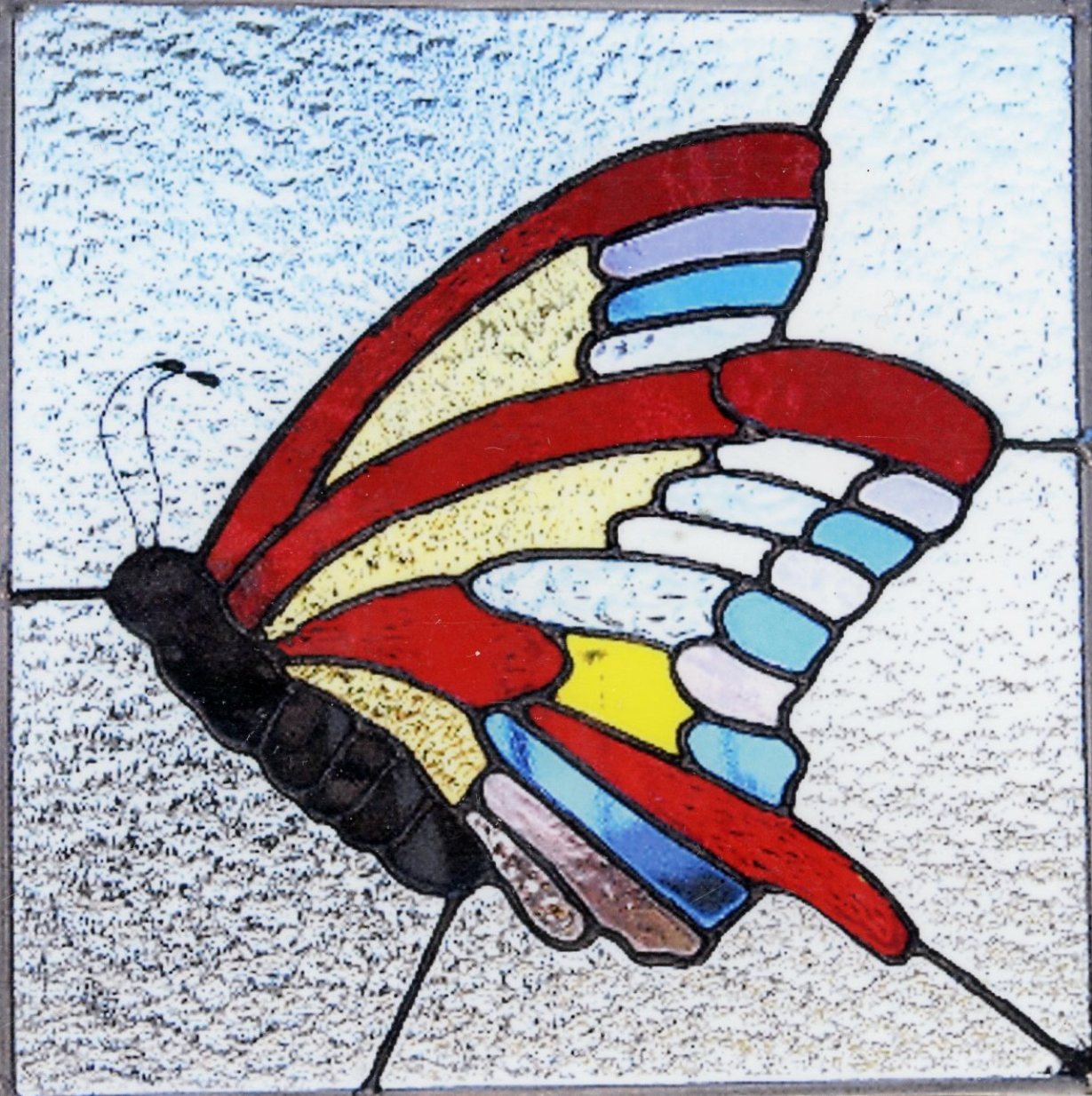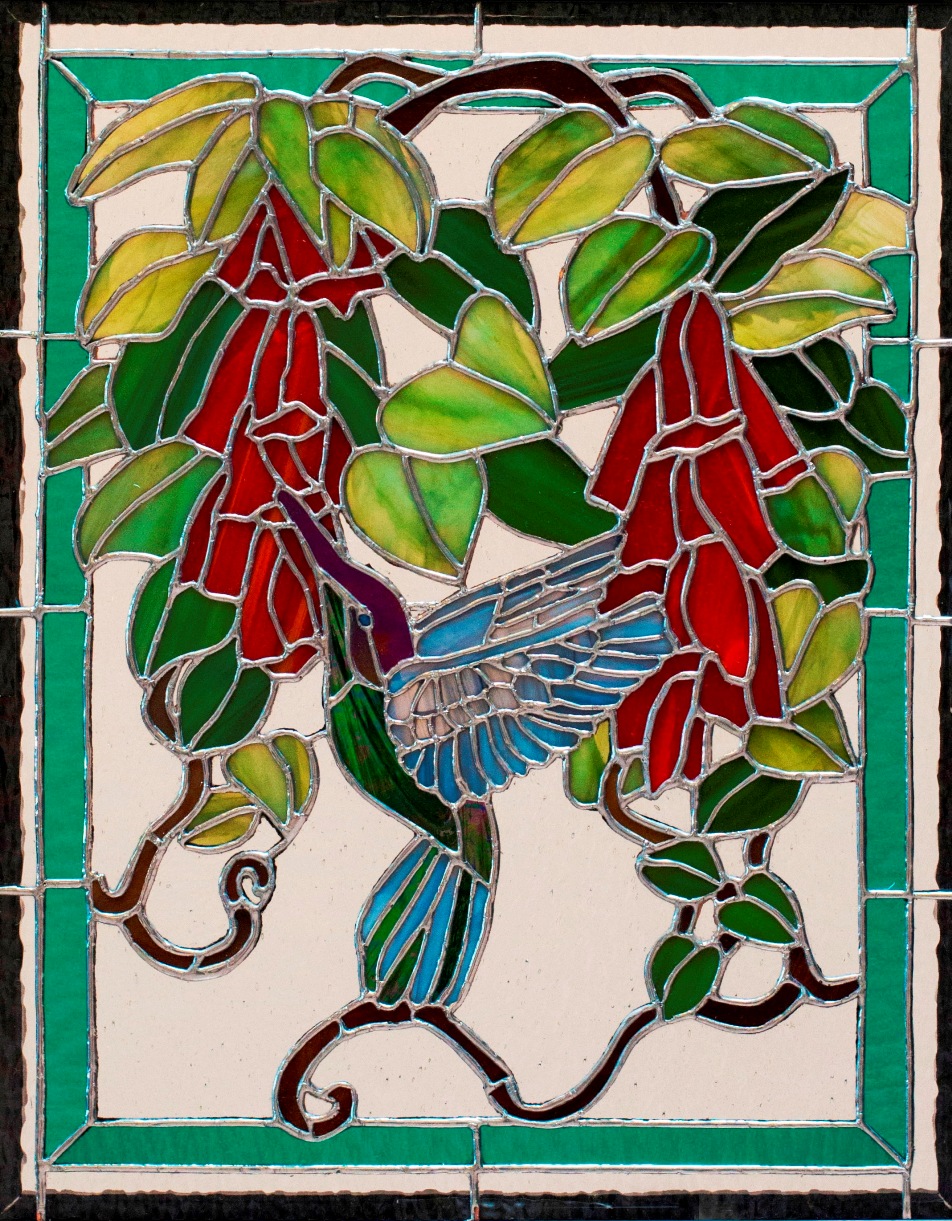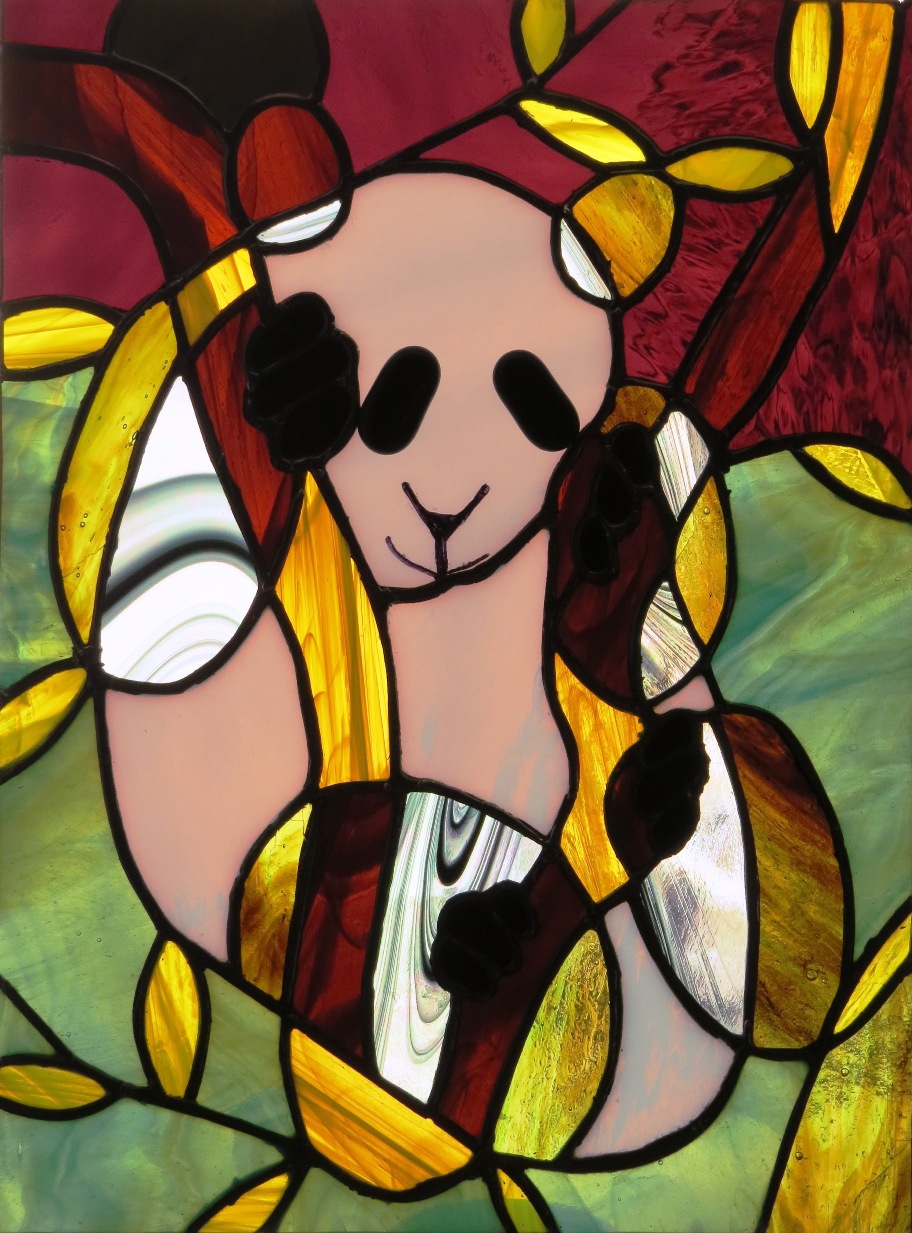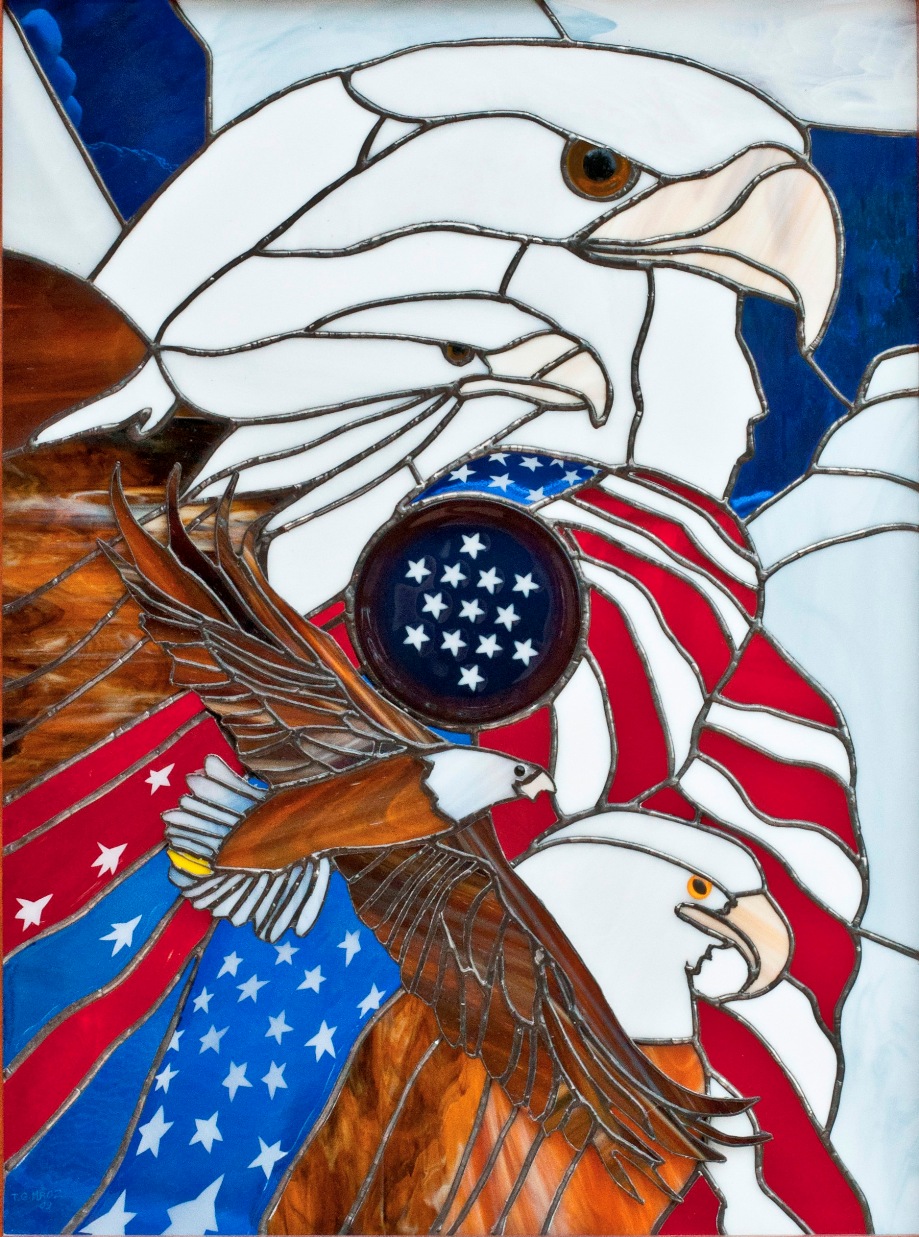Specialties and Techniques
Specialties
- Kiln formed glass by layering, fusing and draping over forms and using dichroic glass, fusing jewelry pieces.
- Glass Eye computer software for creating, editing, and using pre-existing patterns.
Stained Glass Techniques
- Lamps
- Windows
- Sun-Catchers
- Whirls
- Mosaics
- Boxes
- Buildings
- Quarterly Stained Glass Magazines
See the Resources Tab for information on books that are kept in the Tool Room on a bookshelf. Our librarian tries to maintain some organization of the shelves, so it would be helpful, if when you remove a book, to put it on the same shelf it came from.
Soldering Copper Seams
If the metals (came lead or copper foil) to be soldered are oxidized, it can hamper soldering. If possible, store came lead in an airtight container and keep rolls of open copper foil in plastic bags. Clean metal surface with fine steel wool or emery cloth to remove oxidation.
To prevent solder “drip through” when soldering copper foiled seams of panels, lamps or projects, use 50/50 solder first to tin coat the seams on both sides. Than apply 60/40 or 63/37 to create a raised bead seam because it melts at a lower temperature than 50/50.
When soldering copper foil seams, heat both metal and solder long enough so that there is deep penetration of solder on the surface.
For best results, always solder a beaded seam immediately after tinning the surface because the metal oxidizes quickly and becomes more difficult to bead.
Soldering Lead Joints
Make sure that all the lead joints butt evenly against each other. Since lead melts at nearly the same temperature as solder, do not heat the lead. Load the tip of your soldering iron with 60/40 solder and touch the joint quickly with the hot tip. The solder will drop and flow into the seam. A very small amount is sufficient; finished seams should be smooth and flat. If the solder does not melt completely into the seams, beads of solder may break off.
Important: Once a lead joint or copper seam is soldered, allow it to cool undisturbed. Vibration during cooling encourages large lead crystals to form within the seam weakening the entire solder bond.
Washing
To prevent corrosive acids (white film) from appearing on seams, with the passing of time, always wash your piece immediately after completion. Use warm water, baking soda and liquid detergent (not soap). Use a soft brush or sponge and scrub gently. Rinse in clear water. Also, a thorough cleansing prevents the acids from deteriorating the silver backing of mirror glass.




